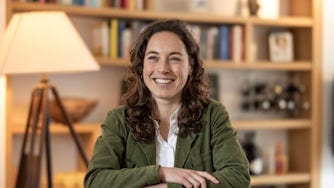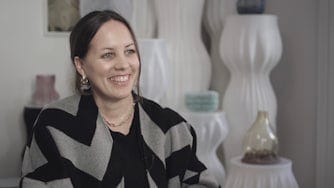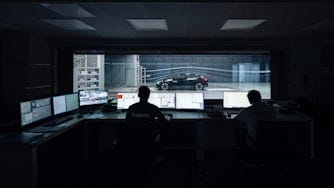Still Talking: Simon Åslund
Today, we introduce you to our very own Simon Åslund. Simon’s creative journey started with borrowing university cameras, but his flair for experimentation led him towards capturing moody cinematic night scenes. When he is not out shooting the Scandinavian twilight, he works for Polestar's Brand and Marketing team. Come along as we get to know Simon Åslund.

Hi Simon, thank you for talking to us today. Could you tell us about yourself and how you got into photography?
Thanks for having me!
My story is nothing extraordinary. I live in Stockholm, Sweden, together with my girlfriend and dog. I’m a creative and photographer, with a little extra love for dark cinematic night scenes.
It wasn’t too long ago I started photography. I had the opportunity to borrow cameras from the university where I studied during a course in basic filmmaking. So, with very limited knowledge of how to pull focus or what shutter speed meant, I borrowed cameras to experiment. Since I studied in a small town in Dalarna, we didn’t have that much else to do, which, in hindsight, was great for learning photography.
After numerous tutorials and strolls around Borlänge, I later found my love for night photography. Scenes that were mundane and quite boring during the day became something else during the night. I got closer to the world of movies and combined classic street-style photography with a cinematic flare.
I’ve had some trouble calling myself a photographer. I think that the word photographer comes with many expectations of being able to handle any situation to get a good picture. But as this has become my profession, I feel like I’m becoming more and more secure in being called a photographer.

What was your first camera, and what do you shoot with today?
I bought my first camera from a friend during my graphic design studies, and it was a Canon A-1 from 1982. I got it very cheap with a lightweight tripod I still use today! The A-1 is still with me today but has been swapped out to a digital camera, as I’ve had multiple rolls of film ruined by internal issues. And I don’t blame it; after all, it’s 42 years old! I’m not very sentimental, so I’m not sure how long it will live rent-free in my apartment though!Today, I’m only shooting with Fujifilm cameras for the simple reason that they look good and perform well in low light. To be specific, I run with the trusty X100F, a small and discrete camera that I find perfect for street photography or any occasion, really.
You produce images for Polestar. How did you start working with us and is there a particular shoot that you are particularly proud of? I got the chance to work with Polestar via the agency I work for. I have been with you guys for almost two years now - and still going strong!
When I reflect on the things I’ve gotten to shoot over the last two years, I must say that the craziest and most fun experience was one of my first tasks in New York during the Nasdaq launch. We were a small team there to capture everything. My job is usually very fast-paced, but this was another level. After our CEO rang the bell, everyone went from the Nasdaq studio to Times Square. We ran back to the hotel and managed to deliver all the content within an hour. Stressful, but a lot of fun!

I like to think of my photos being still frames from a thriller movie.
How would you say that your style of photography differs from the work you do at Polestar?
My work as a photographer at Polestar varies a lot. I’ve concluded that I’m a brand photographer. At first glance, you could think that I’m a car photographer since I work with a car brand but I get to shoot so many different things ranging from people to cars to coffee mugs to suspensions to architecture. But it all needs to fit within the vision of the brand. It’s fast-paced, and I get to challenge myself with so many different parts of photography, which is exciting but also scary at times.
My personal work is probably the opposite of fast-paced and varied. Usually, when I go out shooting, I walk without really knowing where I’m heading. I set a general direction and usually walk for a couple of hours listening to music. Walking is the key to finding frames I normally would drive past or miss.
At the same time, I find a lot of use for things I’ve learnt in my personal work while working with Polestar. When shooting the kind of street-style photography, I get to use the prerequisites I find along the way and work with what I’ve got, which is something I get to do a lot at Polestar. It makes your eye look for certain things more easily, and you become a very adaptable photographer.
What do you want to convey with your photographs?
I like to think of my photos being still frames from a thriller movie. This particular thriller is set to be located in Sweden. Or, to be precise, Stockholm. You get to follow lonely silhouettes during the night, going somewhere you usually don’t see pictured when talking about Stockholm.
In my work, I like to incorporate small hints of Sweden, like signs, post boxes, stores, etc., while giving the viewer the feeling that it could be a back alley in New York or the outskirts of Hong Kong.








01/04
You see AI being more and more integrated into photography and image editing. What do you think about this change?
I think it’s an interesting glimpse of what the future will be. I see AI as another tool for creative people to use in their workflow, much like Photoshop or other tools you use to achieve what you have envisioned. That’s at least the healthiest way for me to look at it. I’m not worried, I’m excited!
Lastly, if someone wants to get into photography or the creative field, what tips would you give them?
I would definitely recommend starting with a cheap analogue 35mm SLR camera. It might not be the most intuitive or easiest (or even cheapest) way of getting into photography, as it will require a bit of trial and error. But it slows the pace and makes you look for interesting moments rather than shooting everything you walk past. Given that you only have 36 frames on a roll of film, you learn how to look for the framing you like and expose an image properly. I think that’s what made me appreciate photography.


